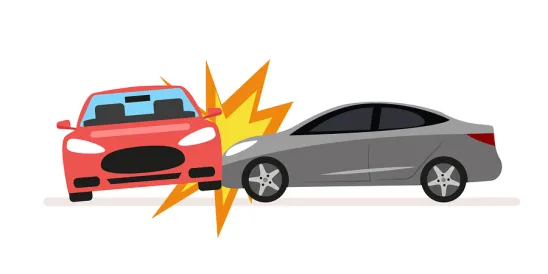A recent study by a team of vehicle experts at the U.S. Department of Transportation’s Volpe Center found that pedestrian crash avoidance/mitigation (PCAM) systems can potentially reduce up to 5,000 vehicle-pedestrian crashes and 810 fatal vehicle-pedestrian crashes each year. Even if a crash is unavoidable, PCAM systems may reduce the resulting number of injured pedestrians by lowering the speed of the vehicle prior to impact.
It only takes a momentary distraction to cause a motor vehicle/pedestrian collision. That distraction may be on the part of the driver of the vehicle or the pedestrian, or a combination of the two. A driver may be distracted by children in the car or a ringing cell phone, or by changing the music that is playing. A pedestrian may be looking at his or her cell phone, talking to others, or even reading while walking. But whatever the cause or causes, the pedestrian is by far the most likely to be injured or killed as a result of the impact.
Vehicle-pedestrian crashes usually involve a vehicle going straight as a pedestrian crosses the road or as a pedestrian walks alongside traffic. To prevent these types of crashes, automobile manufacturers offer “pedestrian detections” system in some vehicle models. If the system detects a pedestrian in the vehicle’s travel path, it alerts the driver or employs automatic emergency braking, preventing a collision.
The Volpe team of experts conducted the study to determine how effective crash avoidance/mitigation systems are in preventing vehicle/pedestrian crashes and injuries. Two of the systems analyzed provided both audio and visual warnings to the driver. Two systems provided only a visual alert to the driver. One system provided only an auditory warning to the pedestrian. Because pedestrian reactions and motions are unpredictable, the auditory pedestrian warning method was not considered in the analysis.
In addition, two automatic braking systems were identified. Braking systems automatically apply the vehicle brakes in imminent crashes when the driver does not respond appropriately. Automatic Emergency Braking (AEB) applies maximum braking pressure, independent of driver input. Dynamic Brake Assist (DBA) increases the driver-applied braking pressure to maximum braking levels to assist the driver.
The Volpe researchers analyzed the potential safety benefits of pedestrian crash avoidance/mitigation (PCAM) systems, focusing on crash avoidance and crash mitigation measures. Real-world pedestrian crash data was analyzed and test data was tracked from PCAM systems manufactured by various manufacturers. The research was sponsored by the National Highway Traffic Safety Administration (NHTSA).
Using a quantitative measure to determine the effectiveness of PCAM systems, the researchers devised a method using test data, real-world driver behavior data, and historical crash data to assess safety impact. The researchers used the data to project how many crashes, injuries, and deaths the avoidance systems can avoid. The Volpe research involved many of the team’s capabilities, including collecting and analyzing crash or driving data, as well as conducting system performance testing, crash simulations, and human-factor-based experiments.
The team’s 150-page report used the methodology to estimate the effectiveness and potential safety benefits of pedestrian crash avoidance/mitigation systems. System effectiveness was estimated for crash avoidance and crash severity mitigation. Safety benefits were projected in terms of annual reductions in the number of police-reported vehicle-pedestrian crashes, fatal vehicle-pedestrian crashes, and injured pedestrians.



 />i
/>i

